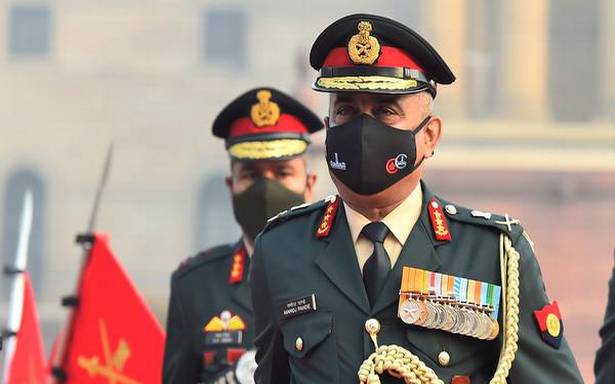Army building an active and balanced force posture to deter escalation towards armed conflict: Lt. Gen. Pande
Legacy challenges of unsettled and disputed borders have become more complex in the face of changing character of future wars, Vice Chief of the Army Staff Lt. Gen. Manoj Pande said on Friday. To succeed in war, there was need to be proactive in building a “credible deterrence”, thereby defeating the adversary’s efforts to achieve its strategic goals and deterring military escalation. “We are cognizant of these requirements,” he asserted.
“To build capabilities and capacities to fight in a multi-dimensional war, the Indian Army is actively involved in modernising and evolving keeping the future of conflicts in mind. At present, it is building an active and balanced force posture to deter escalation towards an armed conflict,” he stated at a webinar organised by the Centre for Land Warfare Studies on the contours of future wars.
“New tools of aggression, riding on disruptive technologies, and hostile actions that exploit the ambiguous grey zone of traditional war and peace, have transformed the battle-space,” he explained.
Core takeaway
“We need to shed the classic war and peace disposition and enhance inter-agency cohesion. In fact, the critical need for all organs of the State to work in unison towards the national objective has been the core takeaway of the past year,” he observed.
The nature of future warfare would rapidly undergo shifts due to the interaction of myriad variables affecting all dimensions of war. It remained especially pertinent when geopolitical complexity was contextualised under emerging rivalries were understood. “It is high time for the Indian security establishment to decipher the changing dynamics and respond accordingly,” he noted.
“As nations are unable to decouple their inextricable multi-omain dependencies, we are increasingly witnessing grey zone warfare, which is low cost, involves lesser risks and results in very little retribution,” he pointed out.
Grey zone campaigns
Grey zone campaigns were typically built around non-military tools, as part of the tactics of remaining below key thresholds of response and employ diplomatic, informational, cyber, historical half-truths, proxy forces, terrorists, economic leverages and other tools and techniques, to “avoid” the impression of a military aggression, he stressed.
On the contours of future warfare, he highlighted that it would essentially be fought in multiple-domains, by a joint force that forces would operate in land, sea, air, cyber and space domains and must be fully integrated and enabled for dynamic responses. Modern warfare would see use of covert swarms of miniature spy drones, unmanned ground vehicles, missiles with adaptive guidance, sentry robots and offensive robotic systems, he added.
Source: Read Full Article

